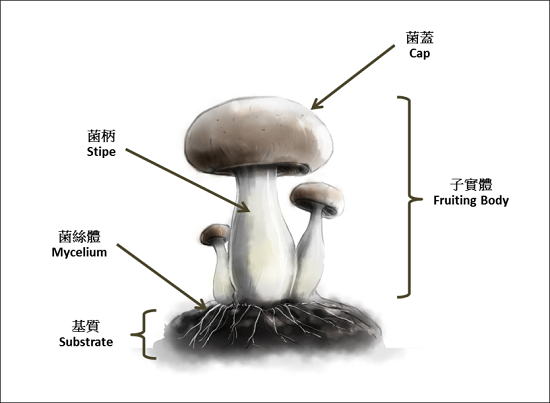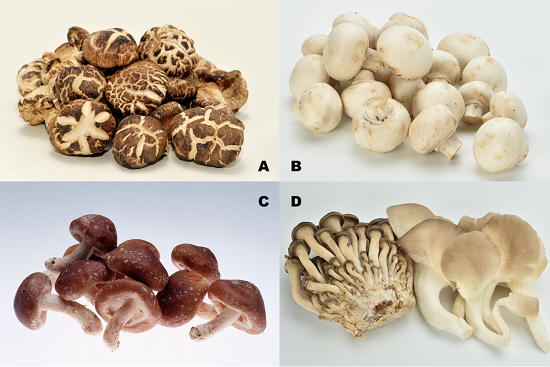
Food Safety Focus (134th Issue, September 2017) – Food Safety Platform
Metallic Contaminants in Edible Fungi
Reported by Ms. Constance LAI, Research Officer,
Risk Assessment Section,
Centre for Food Safety
This is the final of a series of articles on metallic contaminants in food. Let’s take this opportunity to focus on metallic contaminants in a specific commodity – edible fungi.
What Are Edible Fungi?
Edible fungi are generally recognised as the fruiting bodies of a specific plant group – fungi which either grow wild or are cultivated for food use. They have a long history of consumption as food. In the global market, over a thousand of edible and food fungi species have been recorded.
Metallic Contaminants in Edible Fungi
Metals are natural components of the earth’s crust and ubiquitous in the environment. Comparing with other plants, fungi possess a more effective mechanism that enables them to take up trace elements, including metallic contaminants, in substrate. Metallic contaminants can be accumulated to the fruiting bodies from substrate mainly through the extensively branching, thread-like hyphae (mycelium) (Figure 2). Metallic contaminants can impose harmful effects and disrupt the biological processes of fungi. To tolerate the metallic contaminants, various stress tolerance mechanisms in fungi have been reported by researchers. It is commonly believed that fungi produce some stress substances to bind with the metal ions and store the resulting complex in vacuoles, reducing the toxicity of metallic contaminants and improving the tolerance of fungi.

Figure 2: Structure of a typical fungus.
The levels of metallic contaminants in fungi are species-specific and can vary a lot among different fungi species. Generally speaking, cadmium, mercury, arsenic and lead are the common metallic contaminants found in edible fungi. Excess levels of cadmium in edible fungi were reported from time to time as edible fungi are the natural accumulators of cadmium and can readily take up cadmium. A number of edible fungi species have been reported to accumulate cadmium at higher concentrations.
Cultivated VS Wild Edible Fungi
There are nearly a hundred species of edible fungi that can be cultivated; global markets are dominated by a few. Common/ Button mushrooms (Agaricus bisporus), shiitake mushrooms (Lentinula edodes) and oyster mushrooms (Pleurotus spp.) (Figure 3) accounted for nearly three quarters of the cultivated edible fungi grown around the world. Their cultivation technologies are well established and cultivated edible fungi have been produced in large quantities in many countries. However, some species, such as matsutakes and chanterelles, have complex life cycles and need to grow with the roots of a living plant or tree. They have to be harvested from the wild. Further development of technology is needed to cultivate these edible fungi successfully.

Figure 3: Cultivated edible fungi (A: Dried shiitake mushrooms; B: Common/ Button mushrooms; C: Fresh shiitake mushrooms; D: Oyster mushrooms) are readily available in the local market.
Cultivated edible fungi usually accumulate lower levels of metallic contaminants than wild species. Various studies have shown that the level of metallic contaminants in edible fungi depends on the level of contaminants in the environment as well as their life span. The growing environment of cultivated edible fungi is more optimised and well-controlled, and substrates are less likely to contain metallic contaminants. Cultivated edible fungi usually can be harvested in a shorter period of time, ranging from weeks to several months while wild edible fungi may take several years to grow. Hence, wild fungi are more likely to accumulate higher levels of metallic contaminants.
To Reduce Risk…
Do not pick wild fungi for consumption. Wild fungi usually accumulate higher levels of metallic contaminants in uncontrolled open environment, especially near roads, smelters and industrial areas. Besides, wild inedible, poisonous fungi may look very similar to wild edible fungi and may grow in the same habitat. The public should be aware of the risk in consuming wild fungi. The public is also advised to maintain a balanced and varied diet so as to avoid excessive exposure to metallic contaminants from a small range of food items.


